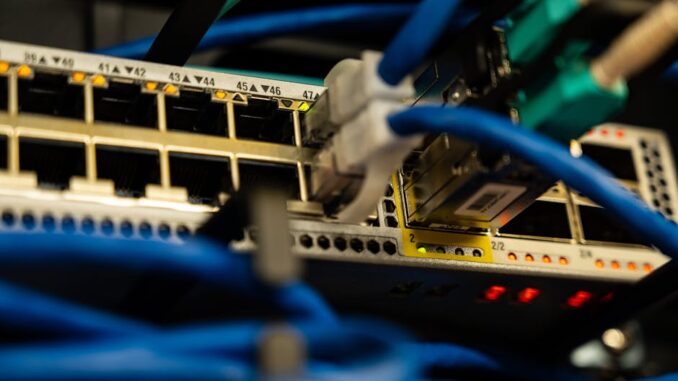
Summary
This article provides a guide for UK hospital management on securing their data and infrastructure. It outlines actionable steps, emphasizing proactive measures and staff training. This guide promotes a comprehensive approach to cybersecurity, focusing on both technology and staff awareness.
Safeguard patient information with TrueNASs self-healing data technology.
** Main Story**
Protecting UK Hospital Infrastructure: A Management Guide
The modern UK hospital is a complex ecosystem of interconnected devices, systems, and sensitive data. Protecting this intricate network from cyber threats requires a proactive and comprehensive approach. This guide provides UK hospital management with actionable steps to enhance their security posture and safeguard patient care.
Step 1: Conduct a Thorough Risk Assessment
Begin by conducting a comprehensive risk assessment to identify potential vulnerabilities. Evaluate all systems, devices, and processes, including medical devices, IT infrastructure, and physical security systems. Prioritize risks based on their potential impact and likelihood. This assessment helps you understand your hospital’s unique security needs and forms the foundation of your cybersecurity strategy.
Step 2: Implement Robust Access Controls
Control who has access to what information and systems. Employ role-based access control (RBAC) to ensure that staff have access only to the data necessary for their roles. Use multi-factor authentication (MFA) to add extra layers of security, verifying user identities through multiple methods. Integrate physical security measures, like key cards and biometric scanners, to restrict access to sensitive areas within the hospital.
Step 3: Prioritize Data Encryption
Encrypt sensitive data both in transit and at rest. This means protecting data as it travels across networks and while stored on servers or devices. Employ robust encryption protocols to safeguard patient records, financial information, and operational data from unauthorized access. Regularly review and update encryption methods to stay ahead of evolving cyber threats.
Step 4: Harden Network Security
Strengthen network defenses by segmenting the hospital’s network into distinct zones. This limits the impact of a breach by containing it to a specific area. Implement next-generation firewalls (NGFWs) that provide advanced threat detection and prevention capabilities. Regularly monitor network traffic for suspicious activity and deploy intrusion detection systems to identify and respond to potential attacks.
Step 5: Secure Medical Devices
Recognize that medical devices are vulnerable to cyberattacks. Implement robust security measures specific to these devices, including strong passwords, regular firmware updates, and network segmentation. Collaborate with device manufacturers to stay informed about potential vulnerabilities and ensure that security patches are applied promptly. Consider device authentication to verify the identity of devices before they connect to the network.
Step 6: Invest in Staff Training
Human error remains a significant cybersecurity vulnerability. Invest in regular and comprehensive cybersecurity training programs for all staff members. Educate them about common cyber threats, such as phishing and social engineering, and empower them to recognize and report suspicious activity. Promote a security-conscious culture where staff understand their role in protecting patient data and hospital infrastructure.
Step 7: Develop an Incident Response Plan
Prepare for the inevitable by developing a detailed incident response plan. This plan should outline procedures for identifying, containing, and mitigating security incidents. Establish clear communication protocols and designate roles and responsibilities. Regularly test and update the plan to ensure its effectiveness in the face of evolving cyber threats.
Step 8: Embrace Ongoing Monitoring and Improvement
Cybersecurity is not a one-time fix but a continuous process. Implement continuous monitoring of systems and networks to detect and respond to threats in real time. Conduct regular security audits and vulnerability assessments to identify and address potential weaknesses. Stay informed about emerging threats and update security protocols accordingly.
Conclusion
By following these steps, UK hospital management can build a robust and resilient security posture that protects patient data, safeguards critical systems, and ensures the continuity of patient care. A comprehensive approach to cybersecurity, focusing on both technology and staff awareness, is essential for navigating the ever-evolving threat landscape and maintaining the trust of patients and the community.


The guide’s emphasis on staff training is vital. Beyond awareness of phishing, how can hospitals foster a culture where employees proactively report vulnerabilities or near-miss security incidents without fear of reprisal, thus strengthening the overall security posture?
That’s a great point! Creating a no-blame environment is key. Perhaps hospitals could implement confidential reporting systems or even reward staff for identifying potential issues. Sharing anonymized examples of near-misses, and how they were averted, could also encourage open communication and learning. What are your thoughts?
Editor: MedTechNews.Uk
Thank you to our Sponsor Esdebe
The guide rightly highlights risk assessment. How often should hospitals reassess these risks, particularly considering the rapid evolution of both cyber threats and hospital technology? Would a dynamic, real-time risk assessment model be feasible or beneficial?
That’s a crucial question! The frequency of reassessment is key. A dynamic, real-time model would be incredibly beneficial, allowing for continuous adaptation to new threats and technologies. Perhaps a hybrid approach, combining regular comprehensive assessments with real-time monitoring, could offer the best balance of thoroughness and agility. What level of resources do you think would be required?
Editor: MedTechNews.Uk
Thank you to our Sponsor Esdebe
The guide’s call for a detailed incident response plan is critical. Regular simulations, including staff from all departments, could significantly improve preparedness and reduce response times during actual cyber incidents.
I agree, regular simulations are invaluable! Expanding on your point, including scenarios that mimic real-world disruptions (like system outages or data breaches) can provide crucial insights and reveal unexpected dependencies. It’s about going beyond theory to practical application. What specific simulation approaches do you find most effective?
Editor: MedTechNews.Uk
Thank you to our Sponsor Esdebe
The guide’s emphasis on ongoing monitoring is key. Establishing clear metrics for evaluating the effectiveness of implemented security measures could provide valuable insights for continuous improvement and adaptation to emerging threats. What specific metrics might be most beneficial?